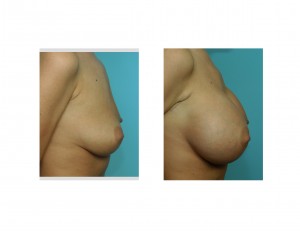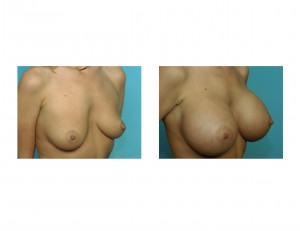Background: Breast augmentation results depends heavily on the implanted device to create it. More than any other aspect of breast enhancement surgery, women spend the most time contemplating what size breasts they want. From this they attempt to figure out what volume of breast implants will create that look.
While numerous methods exist to help a patient choose their implant size, it is still an inexact science that is just as much an art form. Getting very specific about discussing breast size can be difficult but there are some generalities that do apply and are the first thing I try to do when discussing implant sizes with patients. Does one want to have a small, moderate or large breast augmentation result? What such size description is subject to individual interpretation, few patients would confuse a large breast with a small one.
When helping patients to choose breast implant size, plastic surgeons think about how the implant will fit onto the patient’s chest with the amount of breast tissue that they have. One of the most important and reproducible measurements to make in matching implant to breast tissue is the breast base diameter. Every breast implant has its own base diameter which increases as implant volume gets bigger. If a breast implant is chosen whose base diameter is no bigger or less than the patient’s natural breast base diameter, the implant will never be too ‘big’. (as judged by the breast tissue to support it)
Some women, however, do want a very large breast augmentation result. While often described as DD cup or bigger, it is more quantitatively seen as an implant whose base width is bigger than that of the breast.
Case Study: A 27 year-old female wanted to have a large breast augmentation. She was currently a B cup with some significant asymmetry of the breast mounds and nipple positions. Her breast base diameters were 12.0cms. Her goal was to be at least a DD cup after surgery. She wanted a transaxillary approach so saline implants were chosen.


Case Highlights:
1) The size of implants used in breast augmentation is a matter of personal choice and stock implant sizes are available for just about every woman’s desires.
2) A large breast augmentation would be anatomically defined as an implant that exceeds the base diameter of a woman’s natural breast.
3) Large breast implants may be able to create cleavage but may also create unwanted fullness towards the armpit area.
Dr. Barry Eppley
Indianapolis, Indiana



